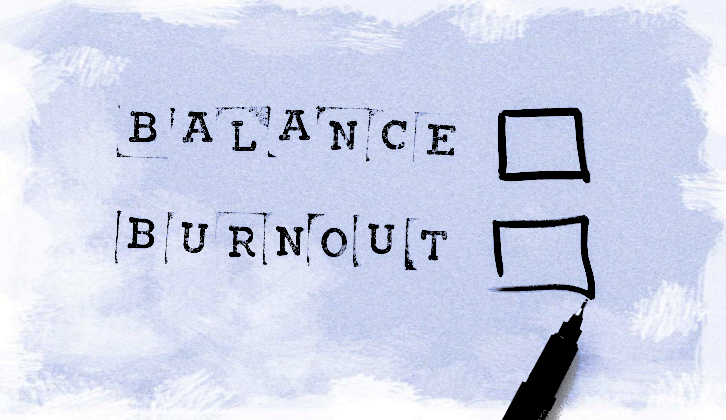As workplaces have navigated the strange push-pull of the pandemic and employees seek meaningful work elsewhere amid the Great Resignation, leaders are looking for ways to make their employees happier, more resilient and more fulfilled.
Many people report feeling burned out, and 40% of employees cited burnout as the top reason for leaving their jobs in 2021. This collective burnout is leading to a churn in the workforce and, even more so, a spiraling of the resilience of those who remain.
Even highly engaged and skilled employees can suffer burnout. One study found that nearly one in five employees reported being both highly engaged and burned out. Essentially, your best employees can also be at the highest risk. Considering that burnout can eventually lead to decreased engagement and lower levels of interest in work, the overall impact on a company is clear.
Managers must invest in their employees to avoid collective burnout and its associated consequences, like decreased productivity and customer satisfaction. To help employees find meaning and enjoyment with your organization, you must first understand the problem they’re facing on a psychological level.
Encouraging employee fulfillment and happiness at work
In a PwC survey, employees cited career advancement as one of the top three reasons they’re looking for new jobs (along with wages and benefits).
Employees want growth opportunities, and they’re not willing to wait around for their job to become more development focused. Instead, they’re taking charge and finding new opportunities that match their preferences. And with job markets running hot in many industries, the process of leaving an old job for a new one has accelerated.
Managers must carefully consider the full experience of the job and whether it’s leading to fulfillment or driving burnout and pushing employees to leave. Start with the following steps:
1. Bravely address your own burned-out mindset
Managers have been struggling with burnout, too, and this mindset will affect how well they can support employees’ growth. So get honest about your mindset first. Notice when you’re stuck in a pattern of delaying decisions, playing it too safe or canceling one-on-one and team engagement activities.
The pandemic pit stop has been a real confidence drain, forcing leaders to stay in their comfort zones and avoid getting “back in the race.” In turn, they’re less equipped to help their employees feel fulfilled.
To combat this, Unilever, for example, connects employees to the idea of purpose “from sustainable brands to sustainable workforce relationships.” During the first year of the pandemic, Dell sought to help managers and employees fight burnout with virtual support groups focused on child care and pandemic isolation.
As an executive coach, I’m working now with many executive and C-suite teams to conduct a “COVID audit and reset.” This is a reflective experience focused on how their habits and rituals have changed over the past three years, noting what they should let go and what they should hold onto now and in the future.
This conscious decision about keeping what works and letting go of what doesn’t is essential to addressing burnout head-on and accelerating forward with clear intentions.
2. Push employees to determine the path
The abilities to choose and evolve are deeply tied to well-being. Psychologists Edward Deci and Richard Ryan labeled it the Self-Determination Theory of motivation, wherein people need to feel like they can manage and design their own lives.
Competence, connection and autonomy are the three components of the Self-Determination Theory of motivation and are the innate psychological needs that will help employees feel motivated to continue growing at work.
Give employees a sense of mastery over their work by co-creating goals. Help them deepen a sense of connection with their teammates by working across departments and taking micro-moments to connect (a short check-in at the start of a call, reintroducing classic ice breakers, carving out a bit of time for deliberate play and fun).
Have teams to choose how they approach certain problems. Guide the output, not the throughput.
Just do one of these things, and you’ll start to see burnout diminish and engagement increase. If leaders’ capability to work in this way has not yet been developed in the sandbox of the pandemic, this should be a priority in your organizational development plan.
3. Accessories can be a distraction. Make sure you really see the person
Leaders can easily get trapped in their thinking about what growth and engagement look like. People aren’t as motivated as you might think by the ping-pong table or the fridge stocked with drinks. Assuming that “special projects” and increased responsibilities will motivate employees to stick around and work hard won’t always do it, either.
In working with complex teams, I have found that team function breakdowns are most often caused by employees no longer seeing teammates for who they really are. They have lost connection with their co-workers’ values, dreams, feelings, thoughts and contributions. And guess what — when someone doesn’t feel truly seen, their most dysfunctional behavior will often be exacerbated.
To see a person, take a risk and have a simple conversation. Start by asking what they value, how their expectations are being met and what they dream of doing. It’s not about acquiescing to their every need. It’s about finding a vision that is in balance between their needs, the needs of their leader, and the organization.
You and your employees have been through a lot. The winds of change are blowing, but that doesn’t mean you need to stop growing together. Find new ways to engage employees and face burnout head-on; it’s the only way to retain a happy, fulfilled team.
Stephanie Peskett is a senior vice president and partner at BTS, an organization that works with leaders at all levels to execute their strategies, help them make better decisions, convert those decisions to actions, and deliver results.
If you liked this article, sign up for SmartBrief’s free email newsletters on leadership and business transformation, among SmartBrief’s more than 250 industry-focused newsletters.
